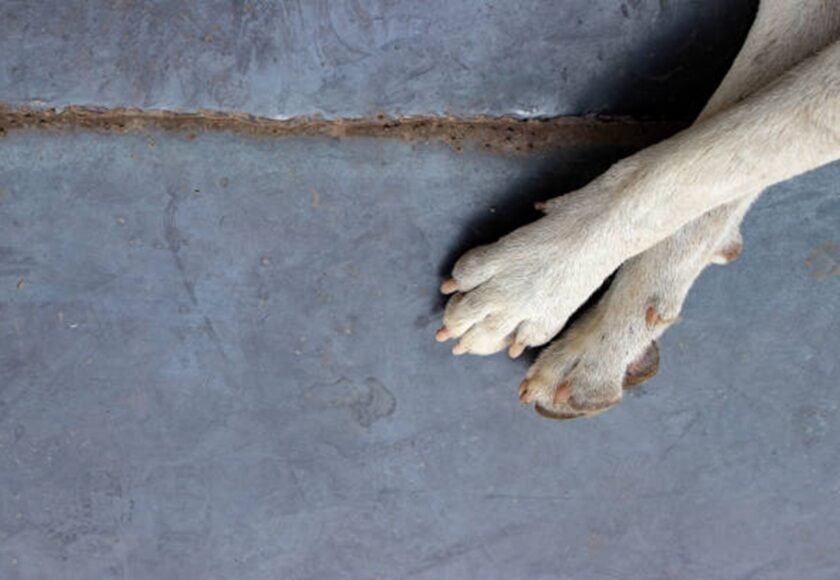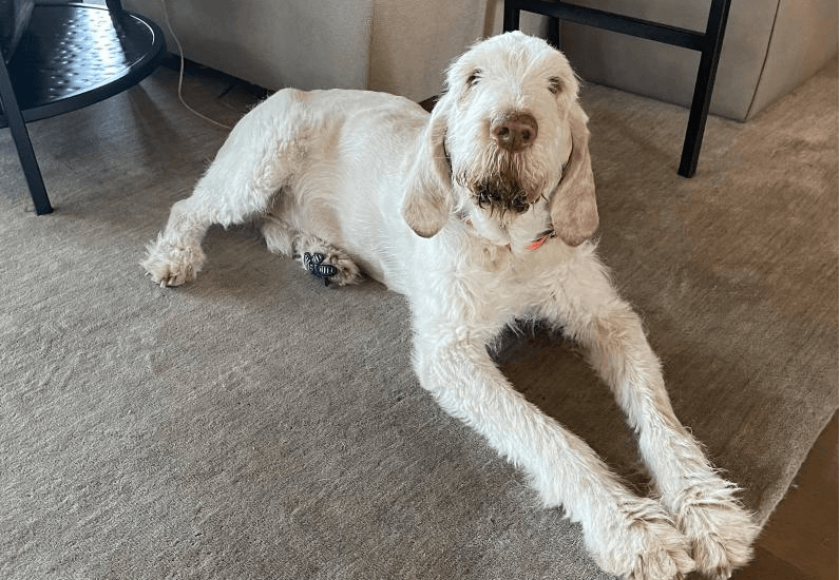Dogs, our loyal and beloved companions, bring boundless joy to our lives. As responsible pet owners, we must ensure their well-being and happiness. Dogs may face various mobility challenges like humans due to age, injuries, or disabilities. Providing them with the proper support and comfort becomes paramount in such situations.
Dog slings have emerged as a beautiful solution to assist needy dogs. These slings offer physical support and provide a sense of security and closeness to their human caregivers. Whether your dog is recovering from surgery, dealing with a temporary injury, or facing age-related mobility issues, a well-crafted dog sling can significantly improve their quality of life.
This article will delve into the benefits of using a dog sling for injured, elderly, or disabled dogs. Moreover, we will guide you through the process of creating a DIY dog sling that suits your furry companion’s specific needs.
Why Does Your Dog Need a Dog Harness for Walking?

Sometimes, a rear leg sling for your senior dog may be necessary for caring. Or if you are keeping a young dog that just had surgery, then he or she may require your help to go upstairs; if you are keeping an aging senior dog who needs a little help standing up after a nap, then knowing how to make this simple and easy DIY dog rear leg sling for your dog could come in handy.
You must know that a dog carrier sling can help support your dog and stabilize your dog’s hind end perfectly. You understand that some dogs may need extra support because of degenerative conditions, weakness in the hipster, or a little help for a brief period when recovering from an injury, etc…
That’s the truth that you can easily buy dog slings for back legs online or offline in the store; at the same time, there are also different ways to save the costs and make one with your own hands, you know? Maybe that only takes you a few minutes, and no sewing is required during the whole process. This sling is durable, easy to clean, and comfortable for your dog.
How Do You Make a Sling?
1. Gathering Supplies
Before crafting a dog sling, you’ll need to gather the necessary supplies. The first item on your list is a suitable fabric that offers comfort and durability. Opt for a soft, breathable fabric that won’t irritate your dog’s skin. Cotton and fleece are excellent choices that balance softness and strength.
In addition to the material, you’ll need a sewing machine, needle, and thread if you prefer hand-stitching. Having a pair of fabric scissors and measuring tape is essential to ensure precise dimensions for the sling.
2. Choosing the Right Fabric
The fabric you select plays a crucial role in the overall comfort and functionality of the dog sling. Our canine companions come in various shapes and sizes, so choosing a fabric that accommodates these differences while providing ample support is essential.
For smaller or lightweight dogs, a softer and lighter fabric like cotton works wonders. It allows for easy adjustability and gentle support. On the other hand, larger or heavier dogs might benefit from a sturdier material like fleece, which can handle more weight without stretching excessively.
Remember that some dogs may have allergies or sensitivities to certain fabrics. Always perform a patch test before crafting the entire sling to ensure your dog’s comfort and safety.
3. Measuring Your Dog for the Perfect Fit
The success of your DIY dog sling lies in obtaining accurate measurements of your furry friend. Ill-fitting splints can cause discomfort and may not provide the necessary support, defeating the purpose of crafting one yourself.
To measure your dog, use a flexible measuring tape and take note of three key measurements:
- The length from the base of their neck to the bottom of their tail.
- The circumference of their chest, just behind their front legs.
- The distance between their front legs, as this will determine the width of the sling.
With these measurements, you can cut the fabric to the appropriate size, ensuring a snug yet comfortable fit for your furry companion.
When measuring your dog, it’s crucial to consider its specific condition. For injured or disabled dogs, consult with your veterinarian to determine the most suitable type of support needed. Certain conditions may require additional padding or specialized designs to alleviate pressure on sensitive areas.
Keep in mind that dogs may have varying preferences regarding wearing a sling. Some may be more comfortable with a snug fit, while others prefer a slightly looser sling. Observe your dog’s reactions and behavior during the measuring process to gauge their comfort level.
4. Step-by-Step Instructions for Making a Dog Sling
Now that you have gathered the necessary supplies and taken precise measurements, it’s time to put your DIY skills to work and create a custom dog sling for your furry friend.
This video teaches you how to make and use a rear-leg sling for dogs.
- Step 1: Cutting the Fabric
Lay the fabric flat on a clean and spacious surface.
Use your measurements to mark the appropriate dimensions on the fabric, considering both length and width.
Double-check the measurements before cutting to avoid any mistakes.
- Step 2: Sewing the Sling Edges
Fold over the edges of the fabric, about half an inch, to prevent fraying.
Secure the folded edges with pins to keep them in place.
Using a sewing machine or needle and thread, carefully sew along the edges to create a clean finish.
- Step 3: Adding Adjustable Straps or Handles
Add adjustable straps or handles to the sling, depending on your preference. This allows you to carry your dog at a comfortable height.
Measure and cut the straps or handles from the same fabric or a sturdy material, such as nylon webbing.
Attach the straps or handles to each end of the sling, ensuring they are well-anchored for extra support.
- Step 4: Reinforcing the Sling
For larger or heavier dogs, consider reinforcing the central area of the sling to provide additional strength.
You can accomplish this by adding a layer of padding or double-layering the fabric in the middle section.
This reinforcement helps evenly distribute your dog’s weight and prevents the sling from sagging.
You Can Choose to Buy Some Rear Dog Lift Products on the Market if Needed

You can see tons of different dog lifts on the market you can purchase. For my dog, he likes Loobani portable dog sling for back legs so much because that helped him a lot when he was recovering from ACL surgery. You can tell the dog lift can provide ultimate care to different kinds of senior or weak dogs by its soft lining and thickening design, but also with a sheepskin-like covering, you may find on the market.
Moreover, the handles on the dog lift were usually equipped with removable padding. So that would be perfect for protecting your hand for easy and comfortable carry. Such as Loobani portable dog sling; if you ever check on it, you may find that the reflective nylon band runs through the sturdy sling to hold the weight of any breed of dog you can reach. And its adjustable straps were long enough to fit a range of species. Sometimes even if your dog is a little short or you are very tall, this carrier still can work pretty well for you and your beloved dog. And after using it, you must fold it and put it into the portable gift bag. So that portable and machine washable with the Loobani dog sling that I chose.
However, there are still some things you need to know about when you choose a dog lift for your dog. For example, you should check if the product can help your dog to stand up, up, and downstairs regardless of indoors or outdoors, get in and out of different kinds of vehicles, get onto some sofa or chairs, be outside for a daily bathroom break, or could provide some assistance when your dog was taking a walk or not. At the same time, the dog lift you choose for your dog should not get in the way when she needs to “go” and can be moved out of the way quickly if required. The dog lift you choose for your dog must be a simple and effective piece of stuff to solve any back leg issues your dog may suffer from. Especially if you are keeping an elderly dog with weak hind legs, orthopedic injuries, hip dysplasia, arthritis pain, or just passed through surgery like IVDD, TPLO, ACL, CCL, or other debilitating ailments you can think about.
One more thing, you need to pay attention to the sizes of the dog lift products. We are very clear that there are many different breeds and different sizes of dogs in this world. So you need to be careful when checking the dog lift you are into; follow the instructions and measure the width and length of your dog’s body’s proper parts. To check what size is matched with your dog, ask customer services if you still have some doubts about sizes choosing out there.
Conclusion
Crafted with love and care, a homemade dog sling can be a game-changer for dogs facing mobility challenges. Providing the proper support and comfort ensures that our furry companions enjoy a higher quality of life. Whether you choose a simple over-the-shoulder sling or a more specialized design, the bond between you and your dog will grow stronger as you navigate life with a well-crafted dog sling.




